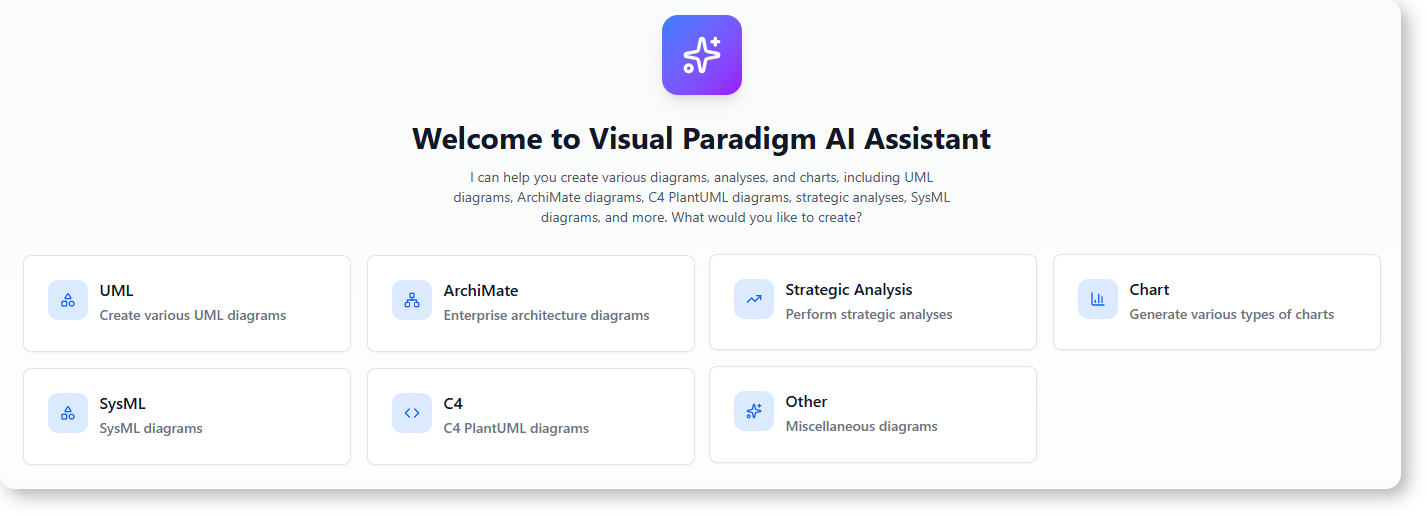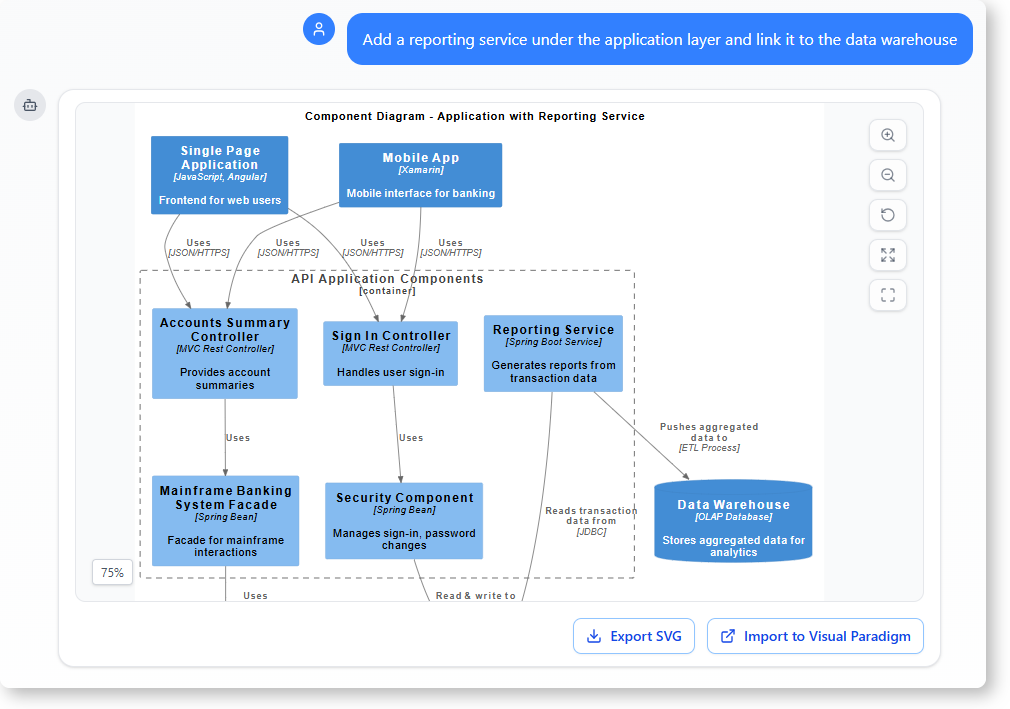AI in Architecture Modeling: Keeping Complex Systems Aligned
In large-scale architecture modeling, maintaining consistency across multiple layers — business, application, data, and technology — can be a major challenge. Diagrams created at different times or by different individuals can easily become fragmented, leading to confusion and misalignment.
Artificial Intelligence is changing that. By understanding the relationships between components, AI can now act as a design companion that helps maintain structural integrity and coherence throughout the modeling process.

Why Alignment Matters in Architecture Design
A well-structured architecture ensures that all parts of a system work together seamlessly. When one layer evolves — such as introducing a new application component — it should remain consistent with the business goals, supporting data flows, and underlying technology infrastructure.
However, in manual modeling environments, maintaining that alignment requires constant human attention. Small naming inconsistencies, missing links, or duplicated elements can quickly lead to errors that ripple across layers. This is where AI makes a difference.
AI’s Role in Ensuring Architectural Consistency
AI in modeling tools is designed to understand context, not just shapes. When you describe a change or provide new information, the AI can analyze the existing diagram, interpret relationships, and ensure the updated model remains logically consistent.
For example, if you add a new process or system, the AI can automatically position it within the correct layer, connect it to related components, and maintain the clarity of the overall structure. This reduces manual corrections and keeps the architecture aligned, even as it evolves.
How Visual Paradigm Online Makes It Work
Visual Paradigm Online integrates this intelligence directly into its AI Chatbot. Instead of redrawing or rebuilding diagrams from scratch, the chatbot examines your current model and interprets your latest instruction in context.
When you request changes — for example, “Add a reporting service under the application layer and link it to the data warehouse” — the AI understands your existing diagram and updates it accordingly. It maintains naming consistency, connection logic, and visual organization, ensuring that each revision fits smoothly into the overall architecture.

This approach keeps your work coherent and connected, even across multiple iterations. You can refine your model through natural conversation, letting the AI handle structural accuracy while you focus on conceptual design and improvement.
The Future of AI-Assisted Architecture Modeling
As modeling continues to evolve, AI will become an even stronger partner for architects and designers. Future tools will not only adjust diagrams for consistency but also suggest optimizations, detect redundancies, and predict how changes in one layer might impact another.
By integrating intelligence into every stage of modeling, tools like Visual Paradigm Online move us toward a future where architects can design faster, communicate ideas more clearly, and maintain perfect alignment across complex systems — all through a simple, conversational workflow.

